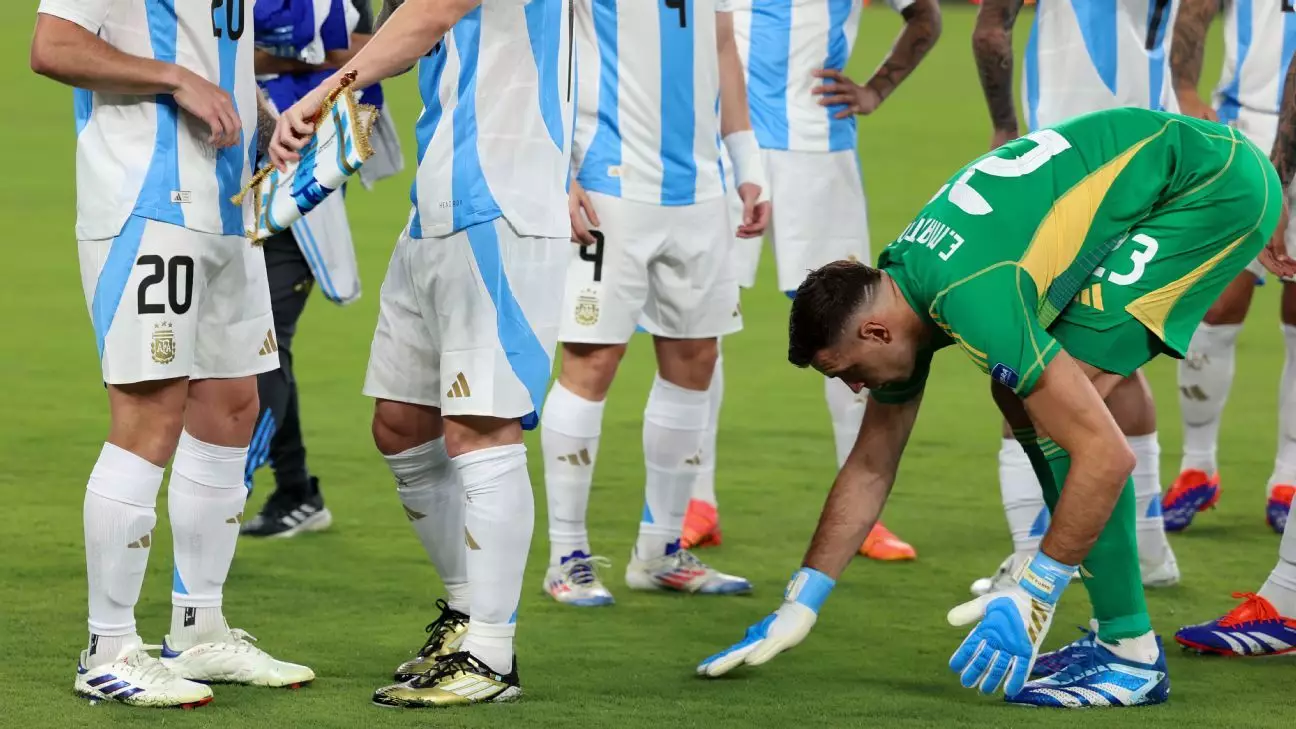As the world of football gears up for the monumental 2026 FIFA World Cup, the anticipation is overshadowed by serious concerns around the quality of playing surfaces in the United States. After last summer’s Copa América, which some viewed as a precursor to the World Cup, players and spectators alike were left unsettled by reports of insufficient field conditions. The tournament was supposed to showcase the best of football, yet it raised questions regarding the United States’ readiness to host an event of such magnitude. With FIFA now utilizing the 2025 Club World Cup as a litmus test, the stakes couldn’t be higher.
Lessons from Copa América: A Wake-Up Call
Last year’s Copa América served as a significant wake-up call for FIFA and U.S. event organizers. Amidst the excitement surrounding the tournament, the pitch quality became a nightmare for many. Players like Argentina’s Emiliano Martínez did not hold back, labeling fields as “disaster” zones. The numerous conversations surrounding the inadequacy of pitches spotlighted a pressing need for change. The question now is whether FIFA can rise to the occasion and learn from these stumbles.
Early games in stadiums that had been hurriedly prepared with makeshift natural grass overlays revealed a stark contrast to ideal playing conditions. The problems were common—dim lighting due to artificial roofs, uneven patches, and, above all, a hastily assembled grass surface that left players vulnerable to injuries and poor performance. With significant stars on display in the upcoming tournaments, the eyes of the world will scrutinize FIFA’s solutions.
Revamping the Approach to Playing Surfaces
To avoid the embarrassment experienced during Copa América, FIFA is establishing an entirely new protocol for the upcoming Club World Cup and World Cup. Historically, FIFA has never permitted games to be played on artificial turf, setting a high standard for natural grass. Building on this tradition, FIFA’s senior pitch manager Alan Ferguson has taken a strategic approach that involves significant logistics and innovation.
FIFA plans to implement an entirely new pitch strategy that maximizes stability and player safety. Unlike past temporary solutions, which relied on quick fixes with limited foresight, FIFA’s new methods involve creating shallow pitches that integrate both natural and artificial grass into a cohesive and durable field. These pitches are designed to last longer and withstand the rigors of competitive play—an essential factor given the demanding nature of international football.
Challenges of NFL Stadiums: Finding the Right Solutions
The challenges posed by utilizing NFL stadiums for soccer cannot be overstated. With a predominance of artificial turf and roofs that hinder natural light, venues like Atlanta’s Mercedes-Benz Stadium and Miami’s Hard Rock Stadium pose specific obstacles to preparing a quality playing surface. FIFA has announced plans to install natural grass fields well in advance of game day; some venues may even see installations up to two months before matches begin.
The repercussions of last year’s mistakes necessitate a personalized approach to each stadium’s unique requirements. From air and moisture management to customizing the layout, FIFA is committed to ensuring that no subpar pitches will tarnish the reputation of these globally significant tournaments. The stakes are immense, as the credibility of not just FIFA but the entire American soccer infrastructure is on the line.
Feedback from Players: The Real Measure of Success
The feedback loop between players and FIFA’s pitch managers will be crucial. Voices from within the U.S. Men’s National Team, who experienced these problematic overlays firsthand, have called for adjustments and improvements. Timothy Weah and other players have expressed mixed feelings about the new shallow pitches, highlighting that while the surface is unique, players must adapt to it.
Gathering real-time data and testimonials from athletes will help FIFA refine the pitch conditions to ensure optimal safety and playability. The aim is not just to avoid prior mishaps but to set a new precedent for how soccer can be played at the highest levels, even in unconventional stadiums.
Embracing Innovation: A New Era for FIFA
The road ahead for FIFA is dependent on their ability to innovate in the face of unprecedented challenges. By adopting new methods, gathering player feedback, and using trials to inform future decisions, there is potential for change that could enhance the soccer experience in the U.S. By the time the World Cup kicks off, FIFA must present a well-remedied plan that contributes to seamless and thrilling matches that live up to the grand vision of the tournament.
As the Club World Cup approaches, FIFA has a unique opportunity to not just redeem itself but to redefine how soccer is played on U.S. soil. The world will be watching closely, and while the challenges are substantial, the potential for a triumphant showcase of international football also looms large.

